Remember when the Avengers came together to deal with the menace of the Hulk?
Did you know that somebody else did the same thing almost 20 years earlier?
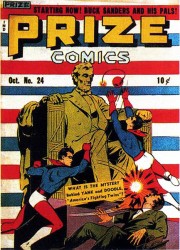 PRIZE COMICS #24
PRIZE COMICS #24
Writers: Dick Briefer/Ken Browne/Ken Crosson (as Richard Foster)/Uncredited
Pencilers: Jack Binder/Paul Norris/Ben Thompson/Dick Briefer/Ken Browne/Mik Suchorsky/Munson Paddock
Inkers: Jack Binder/Paul Norris/Ben Thompson/Dick Briefer/Ken Browne/Mike Suchorsky/Munson Paddock
Colorist(s): Uncredited
Letterer(s): Uncredited
Editor: John Reece (?)
Publisher: Crestwood Publications (as Prize Publications)
Cover Price: 10 Cents
Current Near-Mint Pricing: $500
Previously, in Prize Comics: During the Golden Age of comic books, there were dozens upon dozens of publishers cranking out metric tonnes of pulp adventures, from westerns to romances to comedy adventures. Even in those earliest days, though, superhero adventures weren’t hard to find, and each publisher had their own stable of Superman, Batman and Shield knockoffs. What most companies DIDN’T have was Frankenstein, a monster lifted from Mary Shelley’s novel, who adventures as monster/anti-hero prefigured those of Bruce Banner by a good twenty years! Under the pen of writer/artist Dick Briefer (who worked with the amusing pen name “Frank N. Stein” for part of his run), the adventures of Prize’s Frankenstein were odd even by Golden Age hero standards, Frankie’s stories were the forerunner of The Hulk, the 70’s monster-hero craze, and in a very real way, the entire Vertigo line by featuring a horror tone in the earliest years. Though later, Frankenstein would become a straight-forward (and really funny) humor title, in 1942, the monster was considered a great threat, especially by one Bulldog Denny. To that end, he has called in a few specialists…
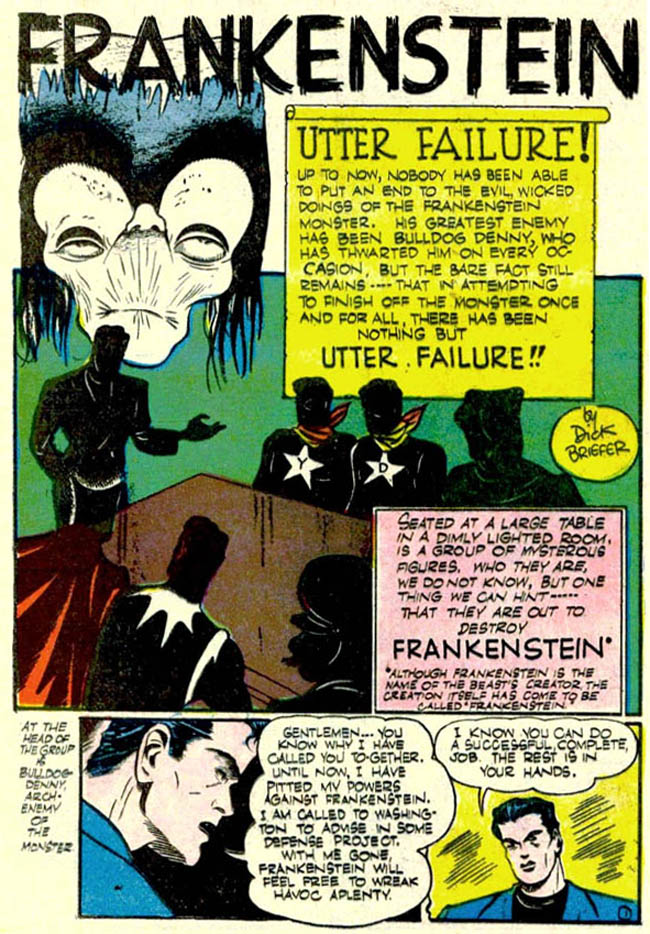
The three or four of you who have actually read Prize #24 probably realize that this is NOT the first page of the issue. In fact, the battle against Frankenstein didn’t even make the cover of the issue (a space dedicated entirely to Yank and Doodle, two guys who take the Robin paradigm to a new extreme by doubling it), and appears in the middle of the books sixty-odd pages of story. However, this issue is pretty much ONLY remarkable due to the assemblage of firepower necessary to bring down Victor’s greatest creation:

“A hitherto unheard of assemblage of crime crushers, made up of the characters you know so well?” I’m going to take the teeth out of a few snarky comments by pointing out that, 70 years down the line, Prize Comics’ best and brightest are mostly forgotten heroes. So, let’s take them in order of their appearance in the issue. Holding down the cover slot, and also batting first in appearance order are Rick and Dick Walters, the twin brothers known as Yank and Doodle…
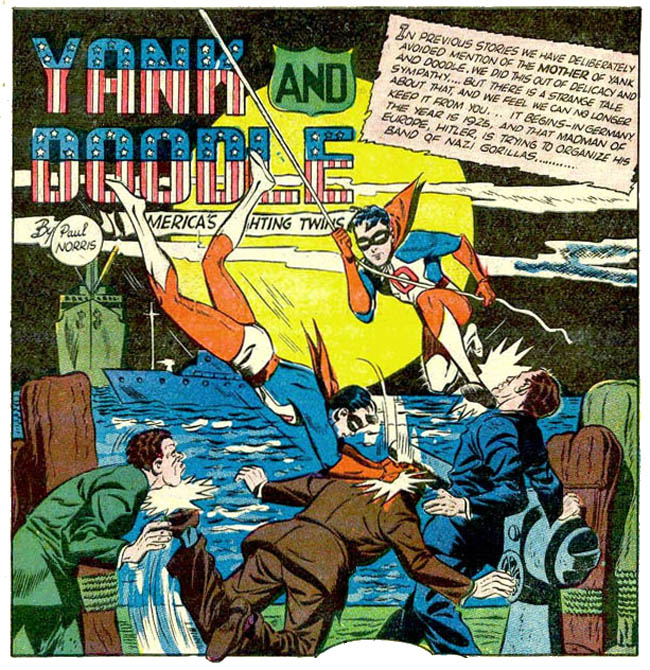
The patriotic pals first bowed the previous summer, and bear a clear influence of Robin in their mask and costumes, but have a much more modern sensibility. Both brothers (whose named are both shortened forms of Richard, oddly enough, which makes me wonder if their long-lost mommy actually knew she had two separate children) are also ready to go toe-to-toe with grown Nazis and fifth-columnists to keep America safe and secure…
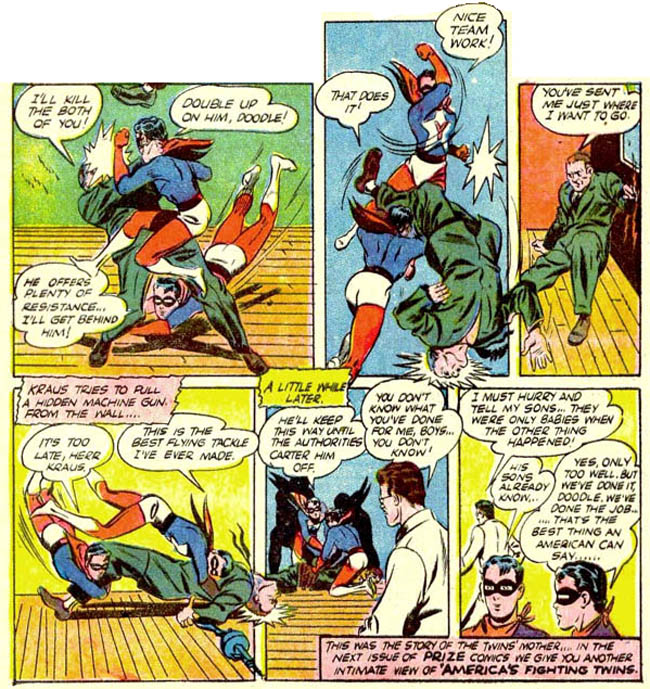
Their dad, Walt (seen in those last two panels) eventually became a superhero himself and shared their spotlight, but in these early days, Y&D are a Golden Age rarity: kid heroes who aren’t just sidekicks. And what of the rather awesomely named Doctor Frost?

Well, his superhero name was so wicked awesome that he never HAD another name, and apparently never changed out of his odd green-and-blue blouse and hotpants combo. The good doctor is one of the earliest cold-powered heroes I am aware of, predating JSA foe The Icicle by a few years, and his costume almost certainly inspired a number of people with similar powers in later years, notably Captain Cold of the Flash’s Rogues Gallery…
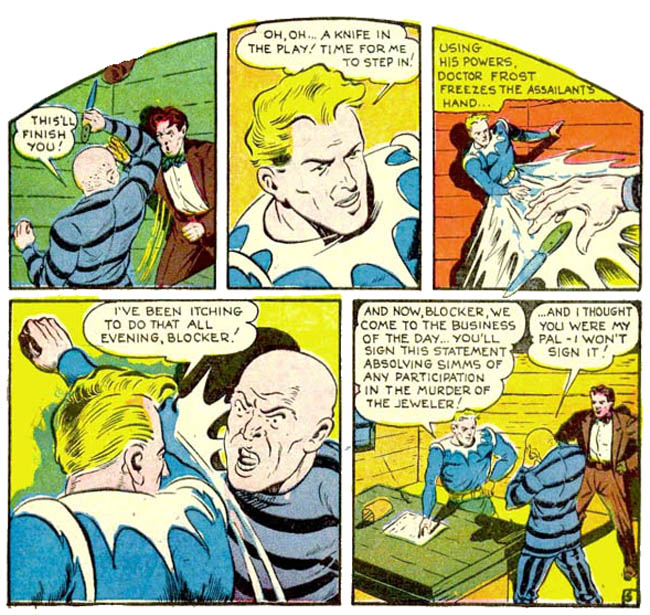
I also LOVE that panel arrangement, looking as it does like a 1940’s comic book stained glass window. Our next hero is no Prize (you should excuse the expression), and is guilty of a number of cardinal superhero sins…
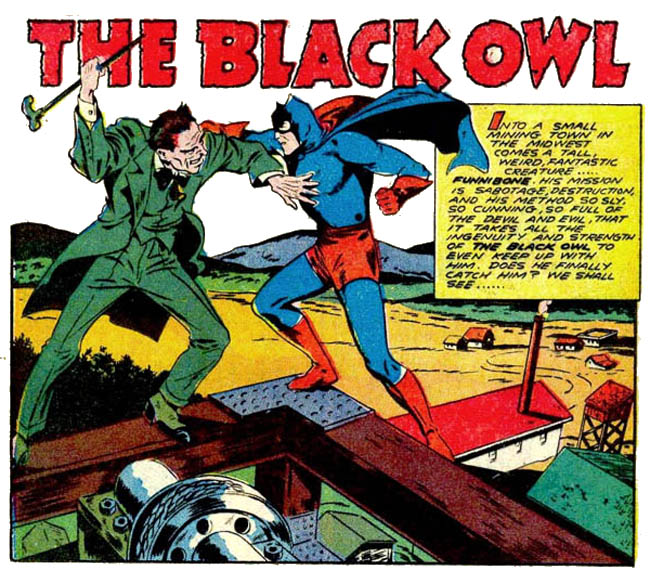
First and foremost, his uniform and silhouette are intentionally designed to evoke Batman’s, while wearing Superman’s colors. Secondly, when Doug Danville began superheroing, he dubbed himself “K The Unknown,” a name that I kind of like better than the Black Owl, especially given that his uniform contains no black, no real elements that say “owl,” and a headpiece that seems to be covered in cheetah-skin for some reason.

In this issue, he even fights a villain named Funnibone, who resembles the Joker in bone structure and gimmickry. The Owl eventually gives up his ridiculous identity and ensemble, handing it over to Walt Walters, the aforementioned daddy of Yank & Doodle, who then became a supporting player in their adventures. As for the General and the Corporal, their adventures tended to be bigfoot comedy pieces without a supernatural element…
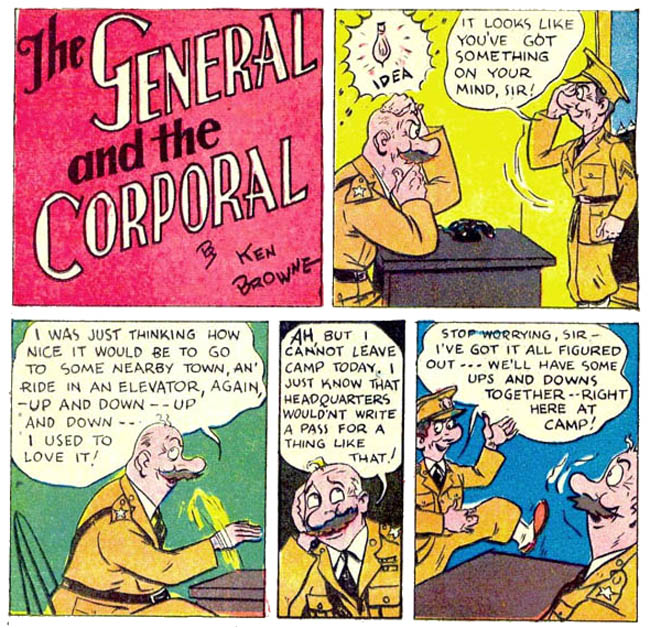
The big gun of these troubleshooters (more creative wags than I have dubbed them ‘The Prize Fighters,’ which is so clever I won’t even TRY to top it) is one Jethro Dumont, known also as The Green Lama (star of pulp, comics and radio, as well as being revived by no fewer than THREE different modern comics companies.) Rather than the elemental Swamp Thing powers he seems to have in some recent portrayals, the Green Lama uses sorcery to give himself mental powers, flight, and the ability to travel through time…
 The individual heroes (as well as Ted O’Neil of the R.A.F., who was clearly busy in the European theatre during this issue) have their individual adventures BEFORE Frankenstein’s story, except for Green Lama who bats clean-up in the issue… Thundering off into the night, the team seeks out what they believe to be a monster, but we the reader are witness to the fact that Frankenstein is more a misunderstood monster than a rampaging brute. (Not that this stops Black Owl from cold-cocking him out of nowhere…)
The individual heroes (as well as Ted O’Neil of the R.A.F., who was clearly busy in the European theatre during this issue) have their individual adventures BEFORE Frankenstein’s story, except for Green Lama who bats clean-up in the issue… Thundering off into the night, the team seeks out what they believe to be a monster, but we the reader are witness to the fact that Frankenstein is more a misunderstood monster than a rampaging brute. (Not that this stops Black Owl from cold-cocking him out of nowhere…)

“Yes! Another owl! A black owl! In a red cape! With blue pointy headgear, like an owl has!” What Doug Danville lacks in color sense, he makes up in guts, wading into his much-stronger foe in a whirlwind of right crosses and… um… other… right crosses. He’s not particularly versatile, honestly, and is quickly overcome. The General and The Corporal, on the other hand, brought along a Howitzer (!!), and prepare to fire it at the monster. Due to a complex slapstick maneuver, the shell jams, The Corporal tries to dislodge it, and is himself fired out of the cannon into Frankenstein. Amazingly, the monster falls under this barrage!
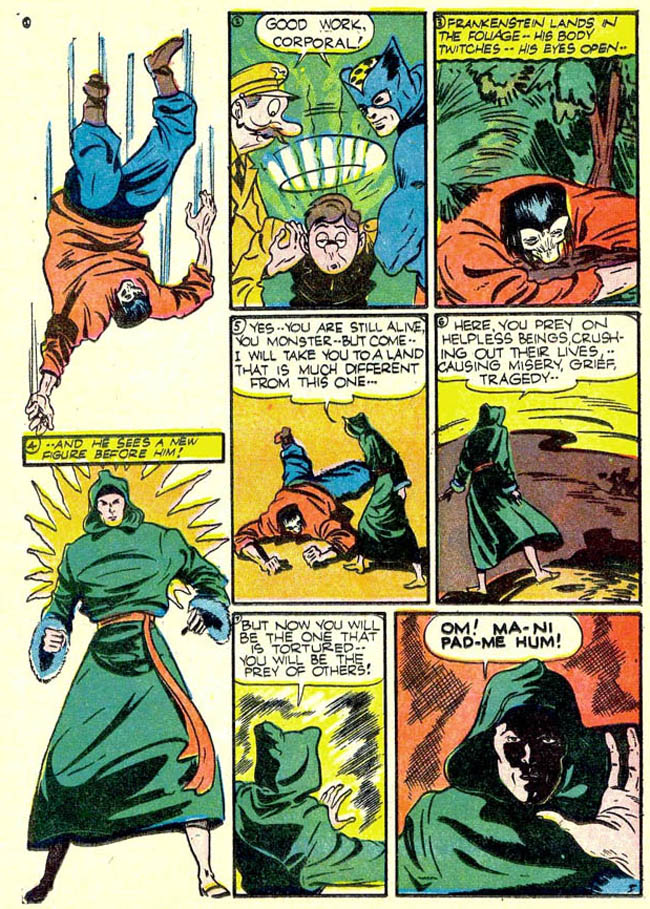
Dick Briefer does a REALLY good job in this issue in aping the characters native art styles (though Golden Age stories seldom list creators, Briefer got to sign his work) and his depiction of monstrous illusions attacking Frankenstein is delightfully creepy. The Lama’s mental prowess drives the confused Frankenstein into a two-pronged ambush, courtesy of Yank and Doodle!

The monster flees their attack, leaping off a cliff into the ocean, only to be knocked unconscious by Doctor Frost transforming his landing point into solid ice. The monster is, for the first time, captured, thanks to the combined efforts of his own co-stars in Prize Comics (a pretty grave injustice.) Though they make a point in the final panel of mentioning how awesome they are as a unit, the heroes never team up again, and it is Frankenstein who gets the last laugh. Indeed, with the possible exception of the much-adapted Green Lama, Frankenstein is probably Crestwood’s greatest success story, headlining his own book well into the 1950’s, and only stopped publishing when the comics code authority made it near impossible to do the kind of stories Briefer wanted (having returned the character to his horror roots after a run as a comedy character.) This issue wraps up with a “cute kiddie” story and a solve-it-yourself mystery that’s actually well-written and a decent mystery.
These kind of team-ups a dime a dozen these days, but in 1942, crossovers like this were rarely attempted. This issue is actually a hoot from start to finish, featuring some interesting stories and (with the exception of the Black Owl) interesting adventure tales. The parallels between Frankenstein and the Hulk in this issue are so obvious that I can’t help but wonder if Stan and Jack were aware of these stories when creating the early Marvel Universe, and as an anthology book, even if you don’t love one tale, you’ll have a new one in eight pages or less. Prize Comics #24 is my favorite kind of significant: a comic that has an interesting story behind it, isn’t afraid to have fun, and makes for a great story when you accidentally run across one in the back issue bins or on the intarwebz, earning 3.5 out of 5 stars overall. Why hasn’t anybody reprinted these things already?








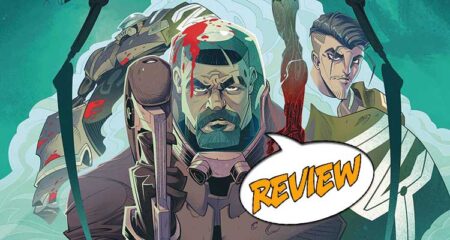
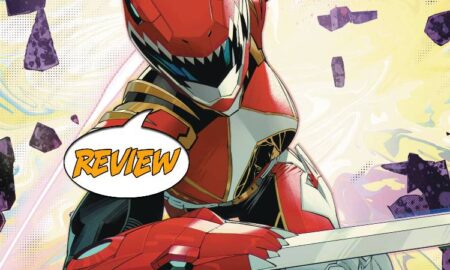
1 Comment
I like how they immediately address the issue of “Frankenstein”‘s name